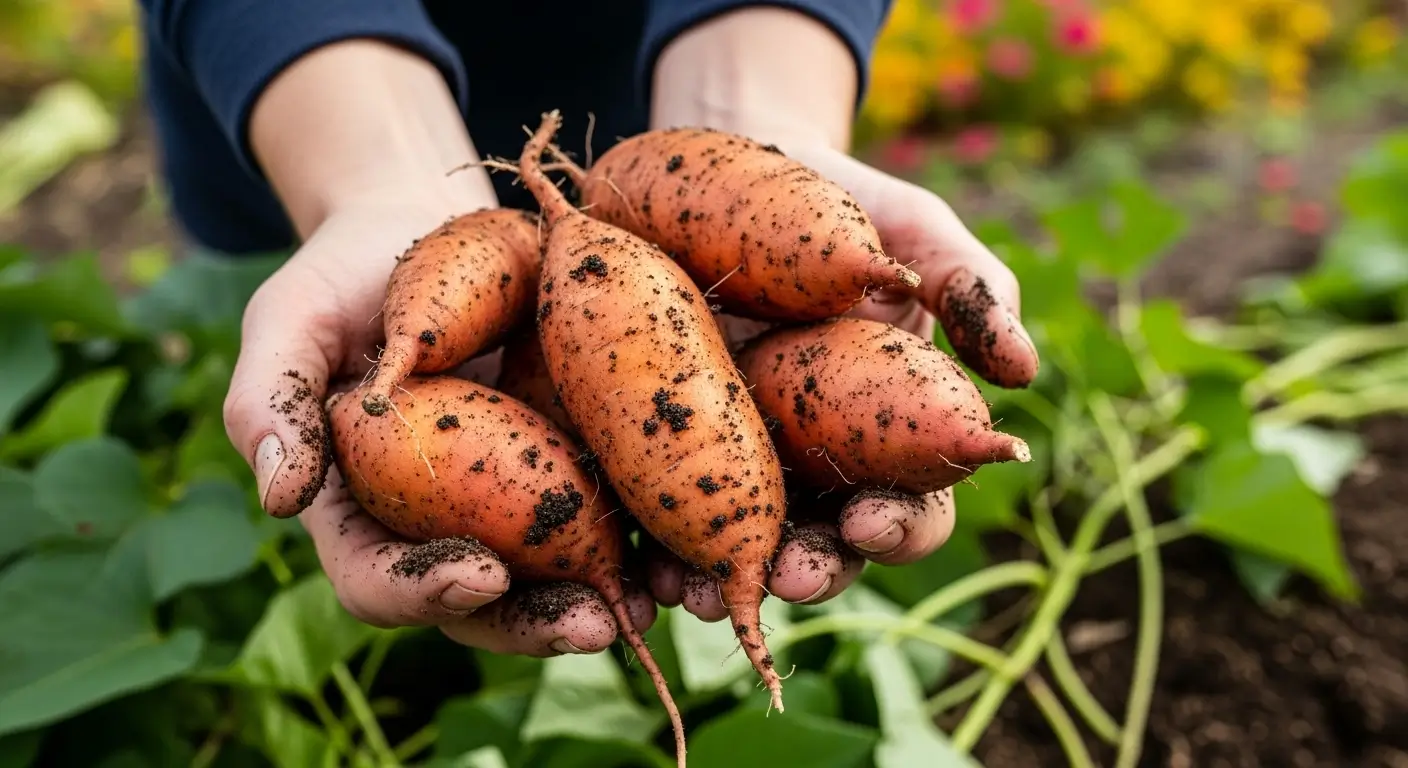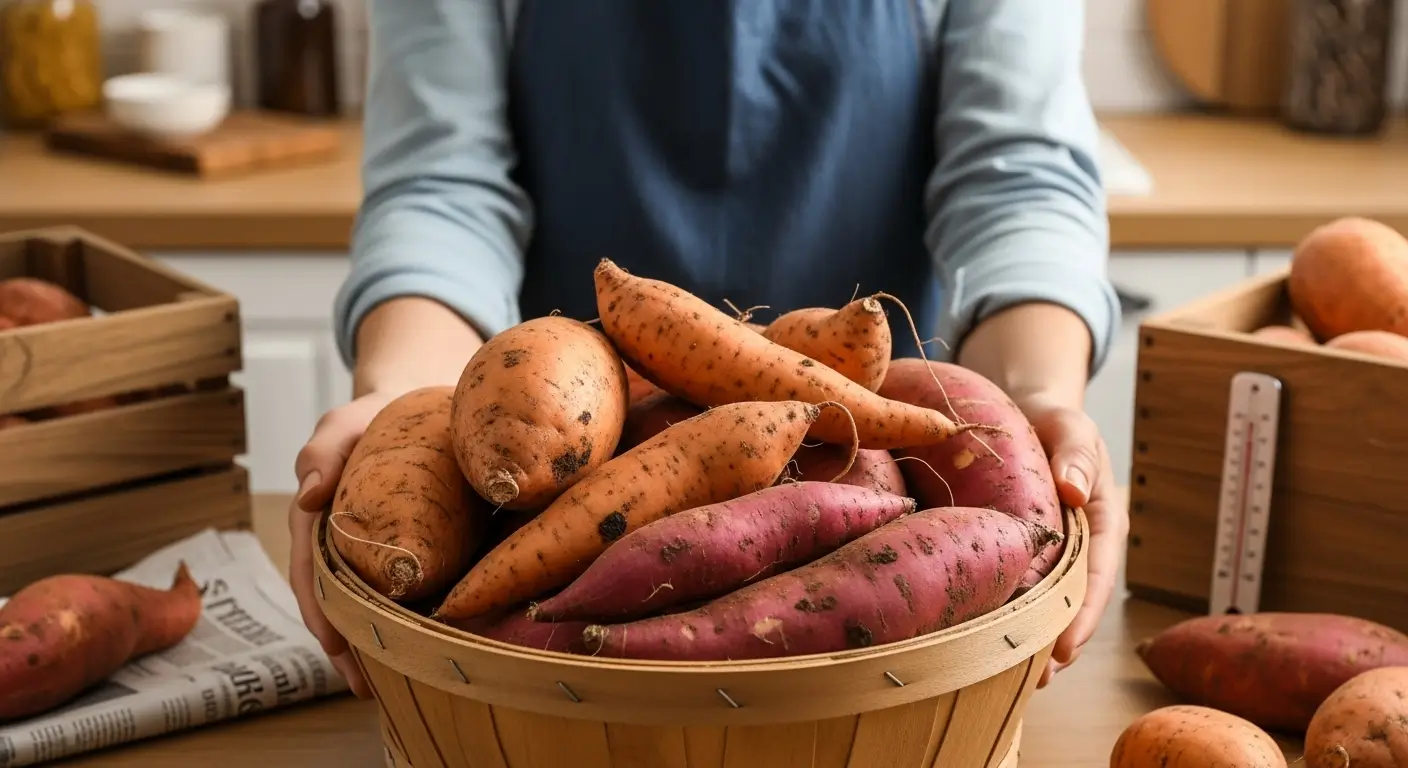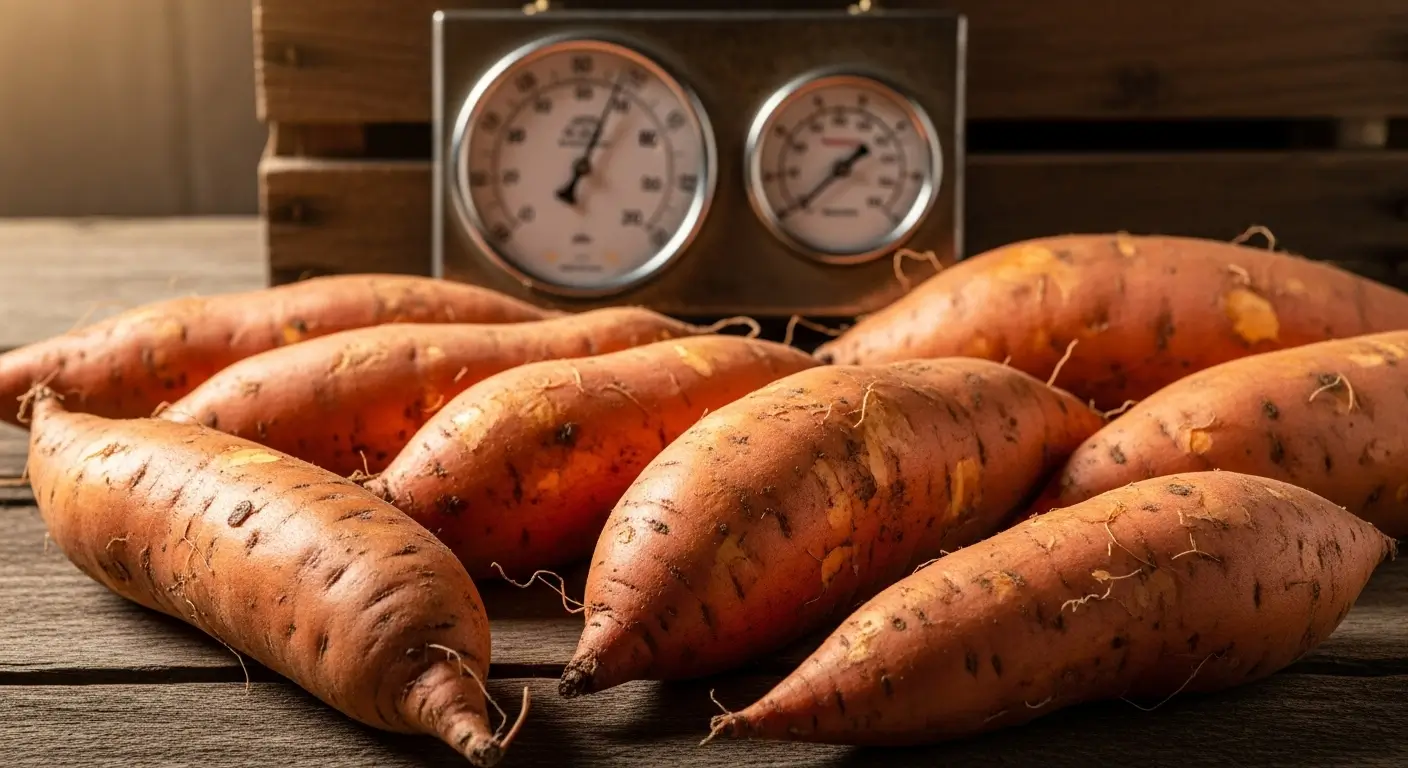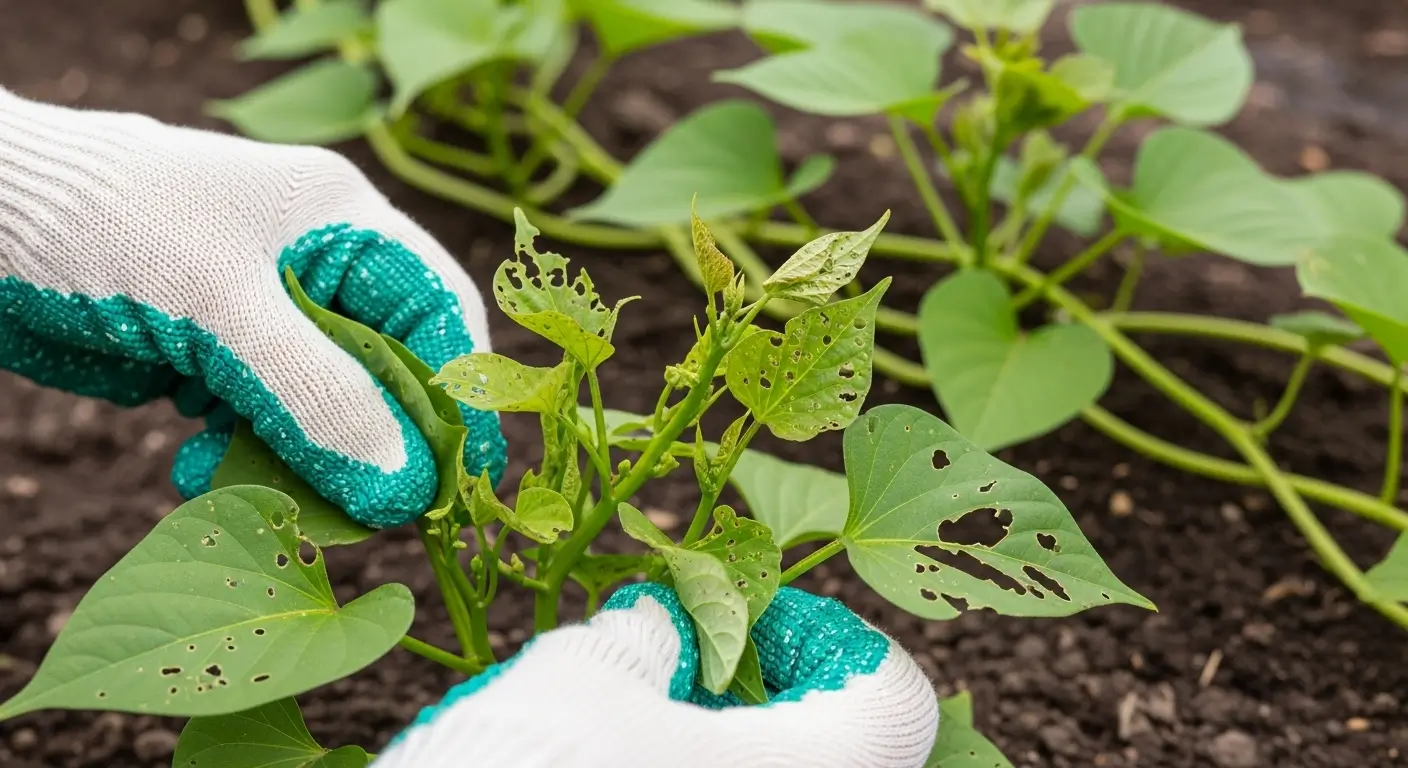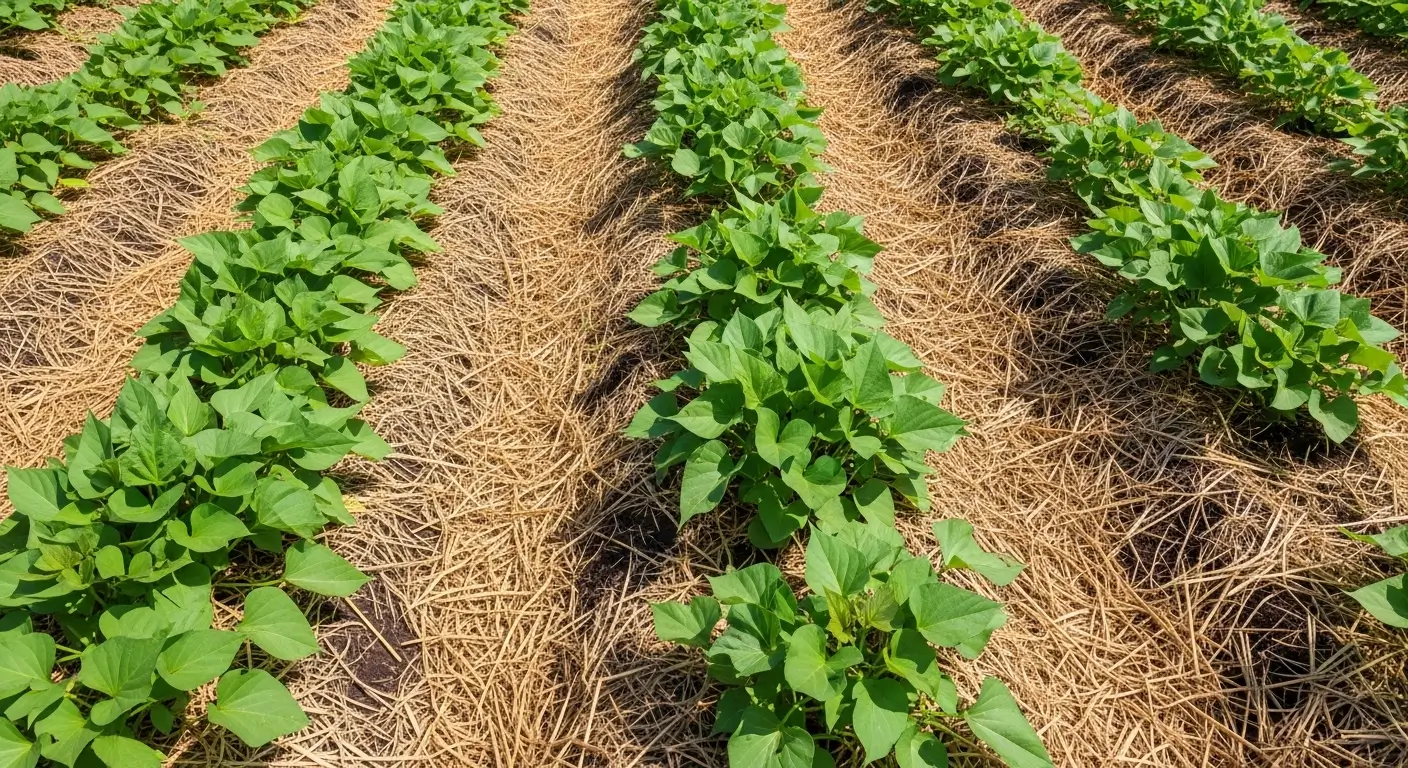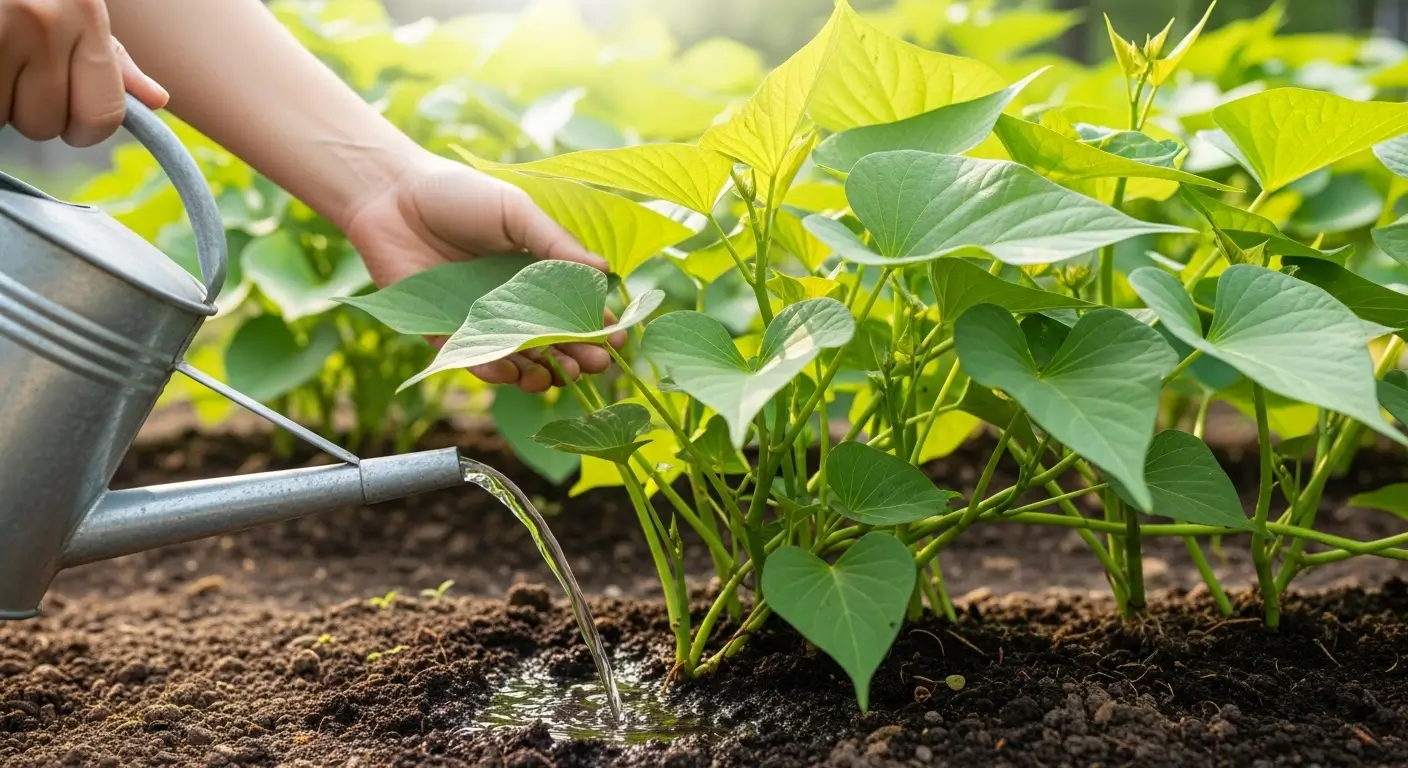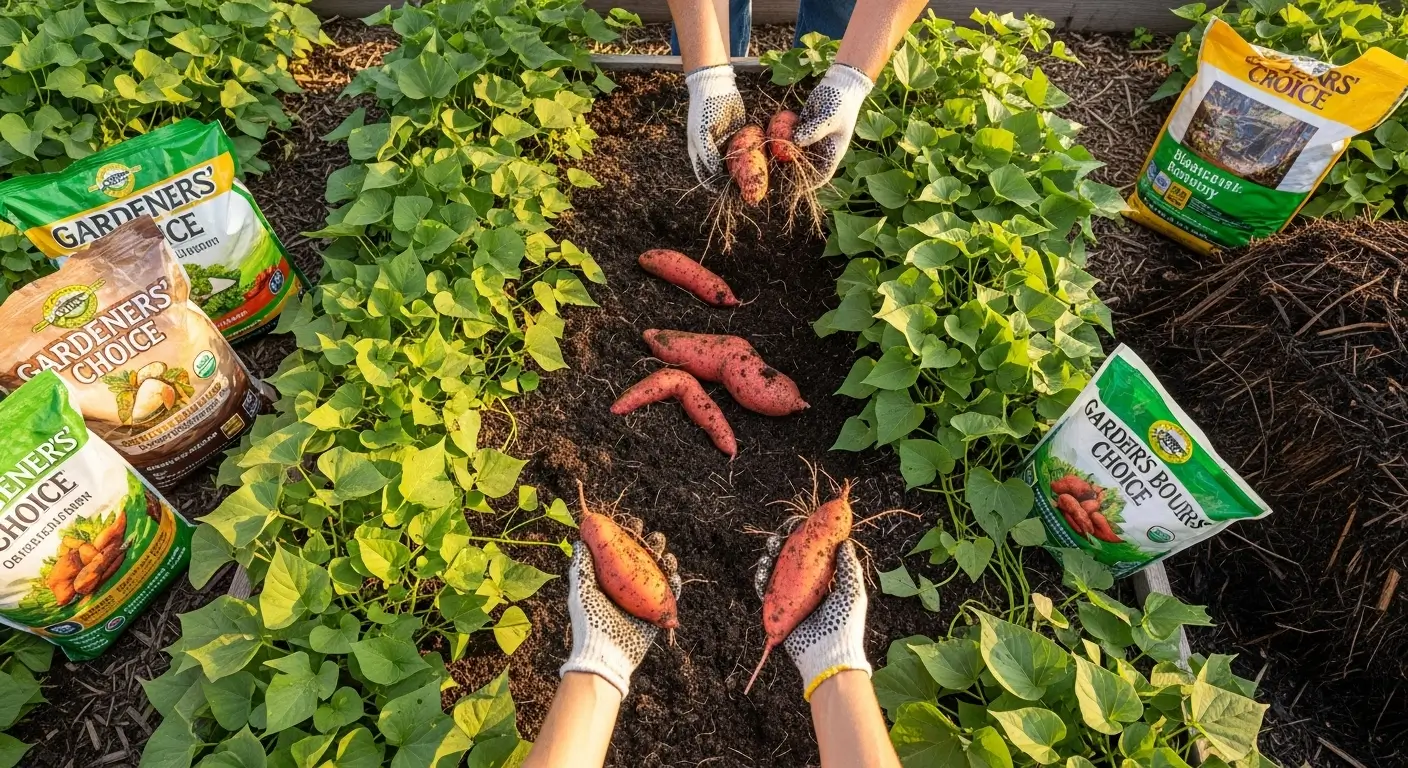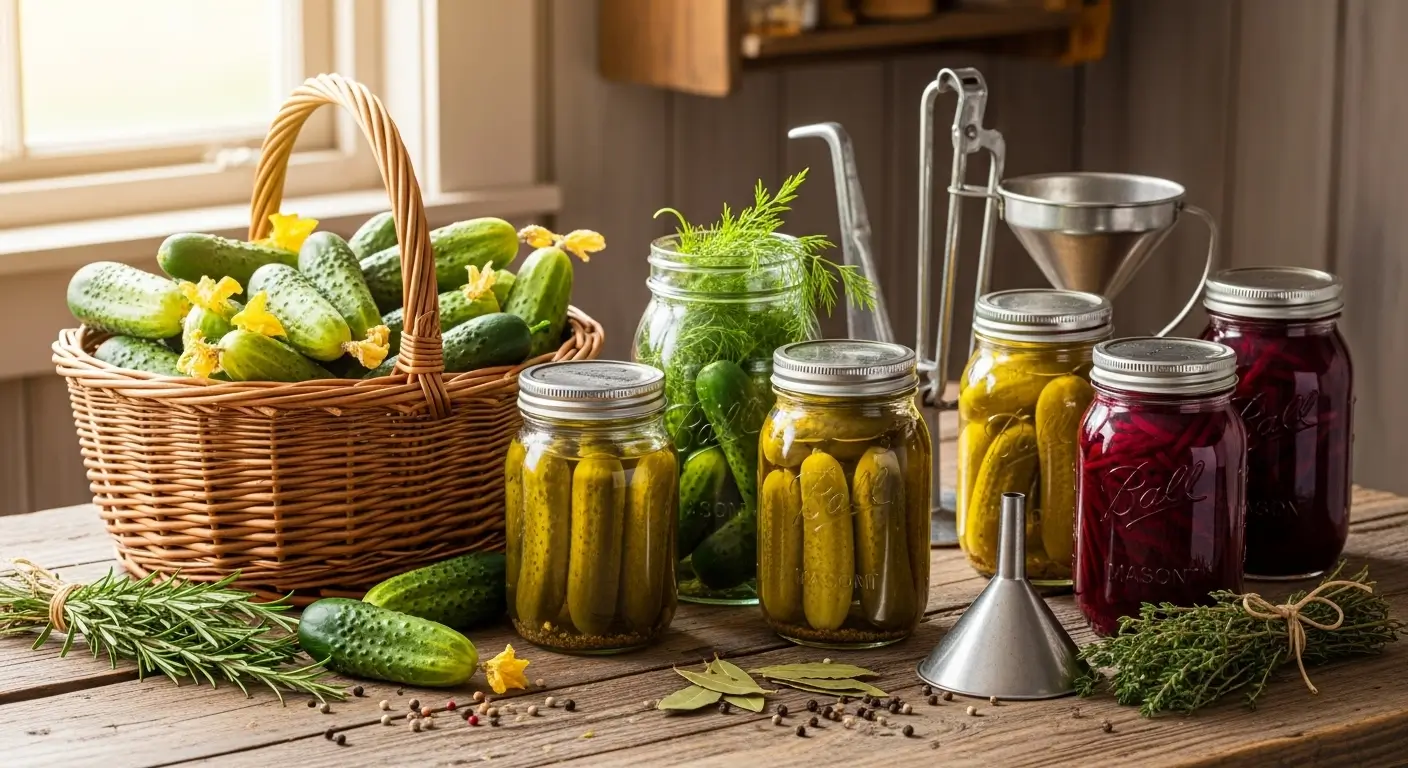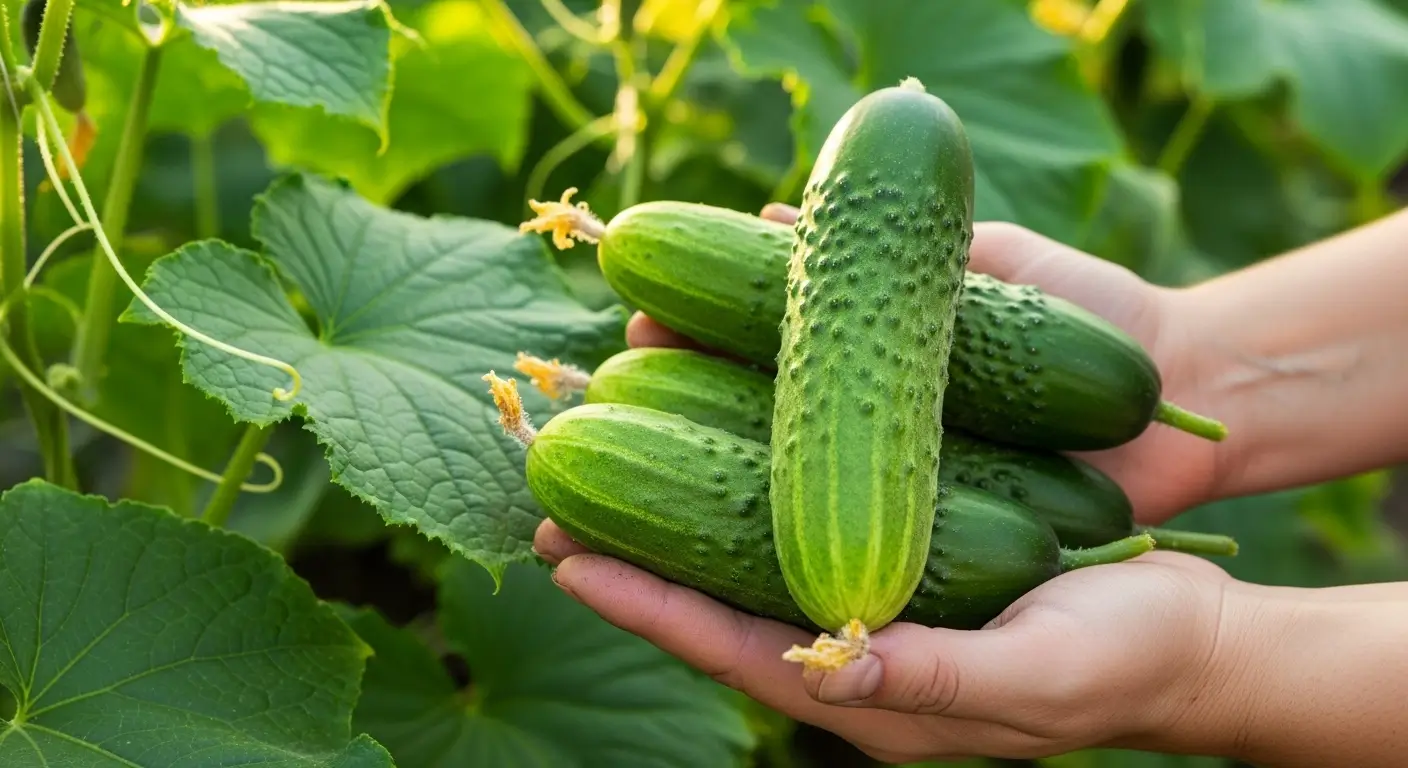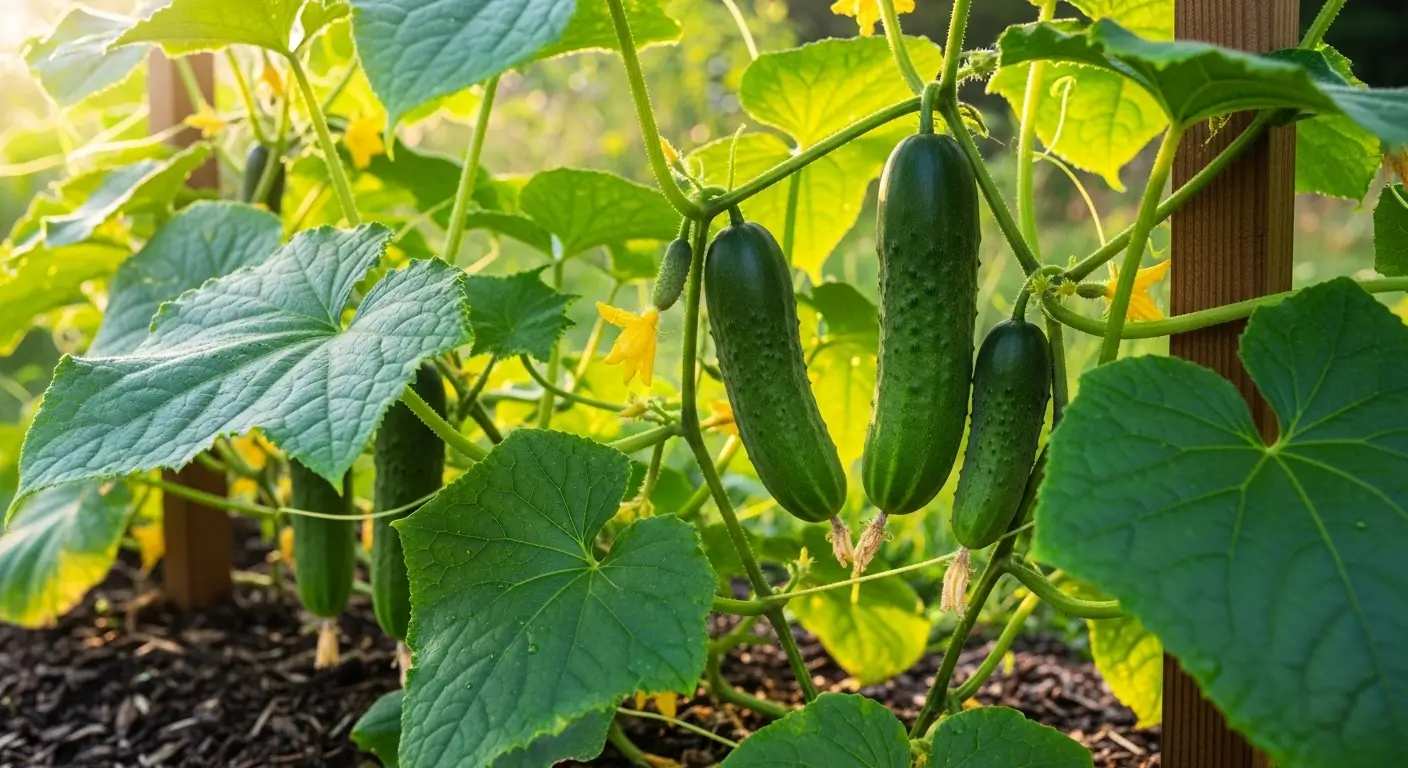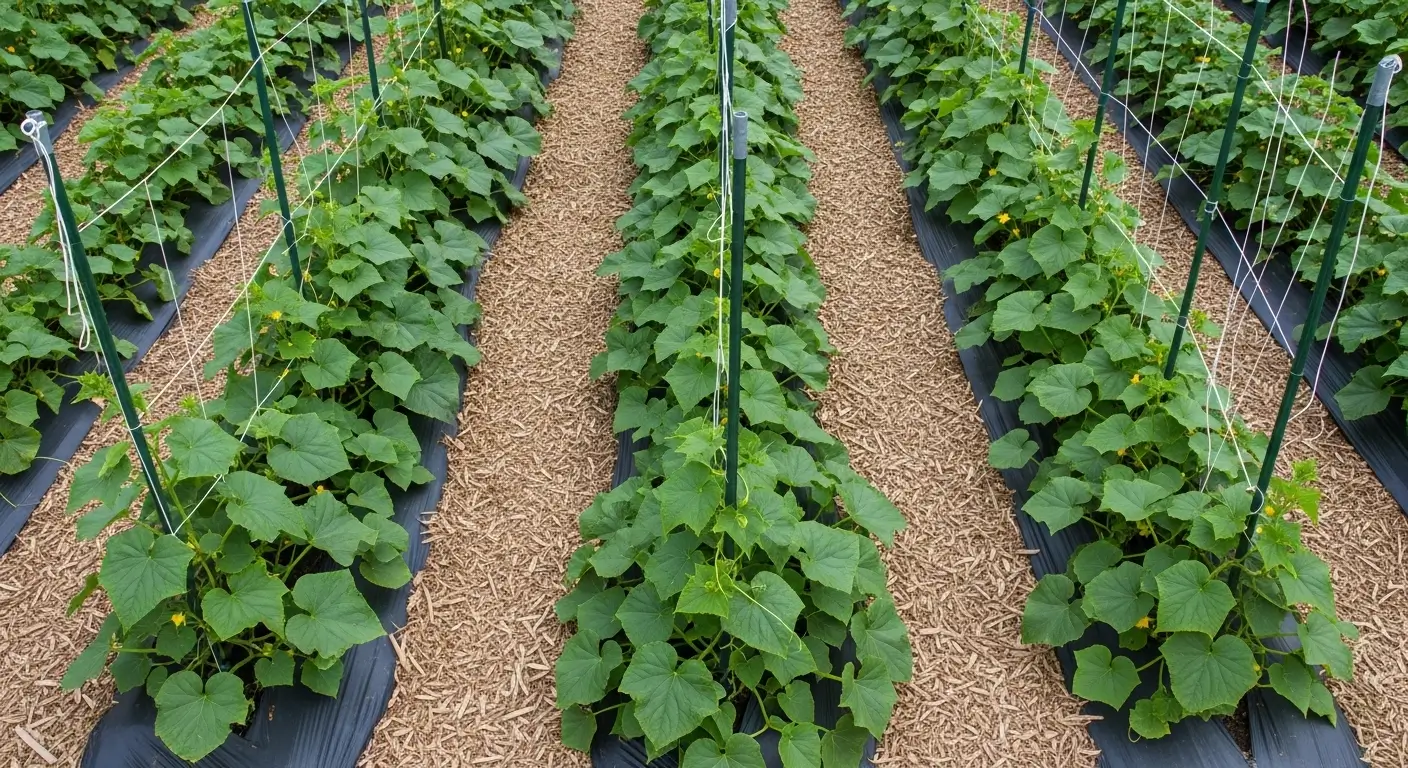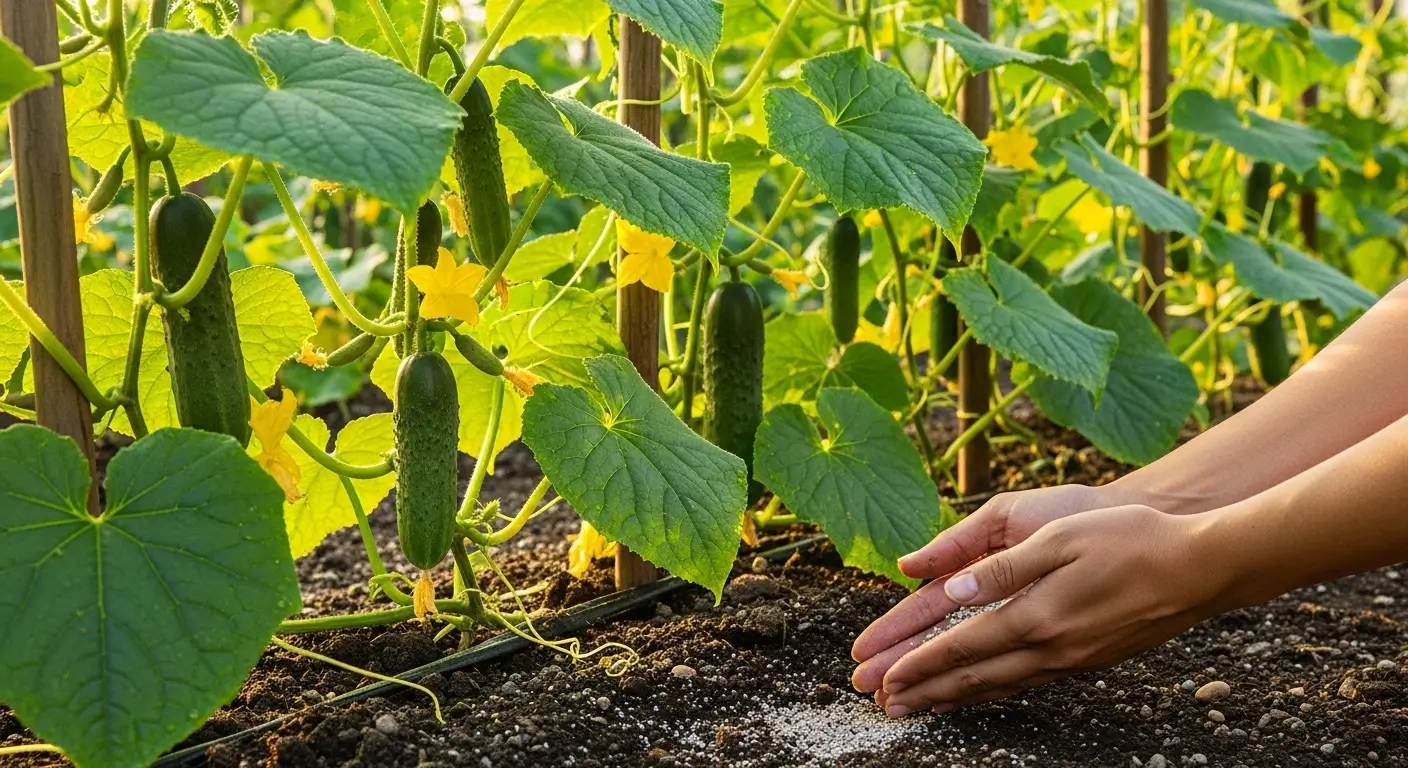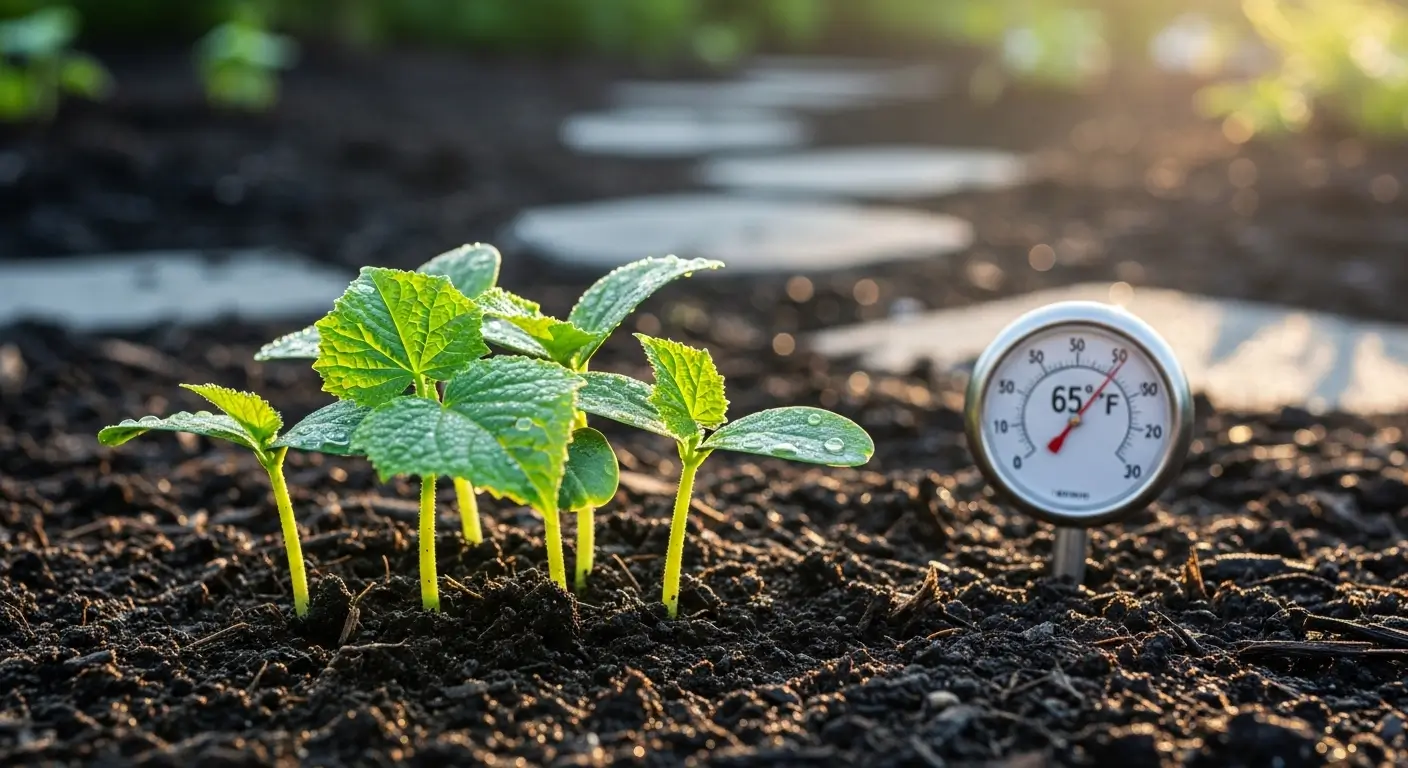Let me tell you about my first sweet potato harvest disaster. So there I was, a super excited newbie gardener with a shiny new shovel, thinking I would dig up these amazing sweet potatoes in August. Why August? Because I was impatient and figured they had to be ready by then, right? Wrong!
What I pulled out of the ground were these sad, tiny, stringy things that looked more like orange carrots than sweet potatoes. I was so bummed! My grandma used to grow the most incredible sweet potatoes, and here I was, completely butchering the whole thing. Timing is really everything with these orange beauties.
That epic fail taught me everything I know about when to harvest sweet potatoes. And honestly? After growing them for fifteen years now, I can tell you that getting the timing right separates “meh” sweet potatoes from the kind that make you do a little happy dance in your kitchen.
So if you’re growing sweet potatoes for the first time (or you’ve had your own harvest disasters), stick with me. I will share all the tricks I’ve learned the hard way, so you can skip straight to the good stuff—those lovely, gorgeous sweet potatoes that’ll make your neighbors super jealous.
Table of Contents
The Sweet Science: Understanding Sweet Potato Development
Here’s something pretty cool I figured out over the years: sweet potatoes don’t just grow bigger underground—they actually get sweeter! I know, right? It’s like they’re doing their own little science experiment down there, turning all that starch into sugar while we’re up here watering and waiting.
I grow many different types of sweet potatoes in my Illinois garden, and they’re all kinda different but follow the same basic rules. They need about 90-120 days to do their thing, which means if you planted in late May like I do, you’re looking at October for harvest time.
Even when your sweet potato vines start looking tired and yellow toward the end of summer, those roots are still growing and getting sweeter. I used to freak out when my leaves started turning yellow in September, thinking I’d killed them somehow. Nope! Turns out that’s totally normal—the plant’s just focusing all its energy on making those underground treasures perfect.
The roots keep developing until it gets too cold, so patience is essential. I know it’s hard to wait when you’re dying to see what you’ve got down there, but trust me on this one.
Key Signs: When to Harvest Sweet Potatoes
Okay, so how do you actually know when it’s sweet potato harvest time? I’ve figured this out after years of trial and error (and a few more disasters).
First thing—count the days. If you planted in late May, you’re looking at mid to late October in most places. But other signs’ll tell you what’s up.
Watch your vines! When they start changing from that bright summer green to more yellow-ish, and some leaves start dropping, that’s a good sign. Don’t panic like I used to—it just means the plants put all their energy into those roots.
I also keep an eye on soil temperature. Sweet potatoes hate cold dirt, and once it consistently stays below 55°F, they basically stop growing. If I can, I try to harvest when the soil’s still in the 60s.
Here’s a sneaky trick my neighbor taught me (she’s been growing these things longer than I’ve been alive): carefully brush away some dirt from one plant and take a peek. If you see nice, plump tubers that are 3-4 inches long with smooth skin, you’re golden. If they still look small and pale, give ’em another week or two.
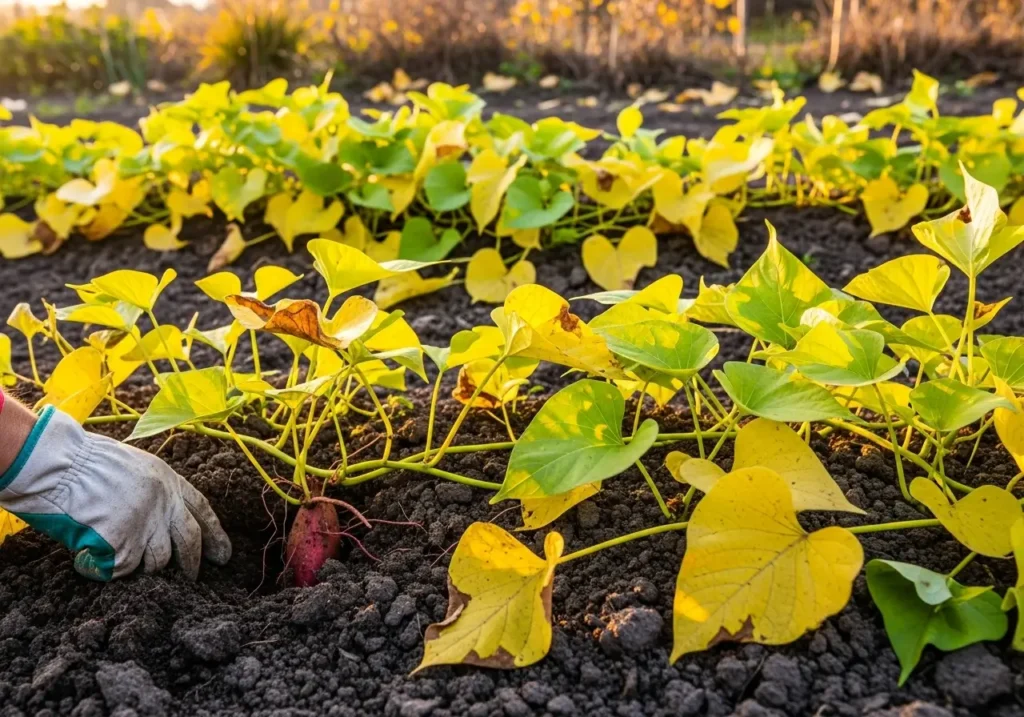
Want to know if YOUR sweet potatoes are ready right now? I put together this quick checker that walks you through all the signs I just mentioned. It takes about 30 seconds and gives you a personalized answer based on what’s actually happening in your garden:
Answer these questions to see if your sweet potatoes are ready to harvest!
Pretty cool, right? That checker covers the main signs I look for every year. But here’s the thing—even if everything looks perfect, weather can totally change your harvest timeline.
Weather Timing: Your Sweet Potato Harvest Window
This is the part that still makes me a little nervous every year, not gonna lie. Sweet potatoes are drama queens in cold weather—even a light frost can mess them up and ruin your whole storage game.
I’m obsessed with checking the 10-day forecast starting in early October. The second I see frost in there, it’s go time, whether they need more time or not. I learned this lesson the hard way when I lost half my crop to an unexpected early frost one year. Better to harvest a little early than lose everything!
In my garden, I usually dig them up somewhere between October 15th and 25th. Last year was awesome—we had this crazy warm fall, so I waited until October 30th and got some absolute monster sweet potatoes. But the year before? Early frost warning had me scrambling to harvest on October 12th.
Pro tip that I wish someone had told me years ago: if frost’s coming but you’re not quite ready to harvest everything, you can cut the vines back to about 6 inches. It helps protect the roots and might buy you a few extra days if you get lucky with the weather.
Check your USDA plant hardiness zone to better understand your local frost dates.
Step-by-Step: Harvesting Sweet Potatoes Properly
Alright, let’s talk about actually digging these babies up. There’s a right and wrong way to do this, and I’ve done it wrong plenty of times.
First off, try to pick a dry day. Wet, muddy soil is just miserable to work with, and your sweet potatoes will be way cleaner. I always try to wait for at least two dry days in a row.
Start by cutting back the vines to about 4-6 inches. I use my pruning shears because they are way cleaner than trying to yank them up. Save some nicer vines if you want—they make cool houseplants!
Here’s where I used to mess up big time: I’d grab a regular shovel and start digging. Bad idea! I sliced through so many beautiful sweet potatoes that way. Use a digging fork instead—trust me on this one.
Start digging about a foot and a half away from the plant and work your way in slowly. I stick the fork straight down, then gently rock it back to loosen things up without lifting. Do this all around the plant in a circle, gradually getting closer.
Only after I’ve loosened everything up do I start lifting and hunting through the soil. And don’t be surprised if your sweet potatoes are spread out way more than you expect! I’ve found some hiding two feet away from the central plant. Take your time and really dig through all that loose dirt—some of my biggest ones have been way out on the edges.
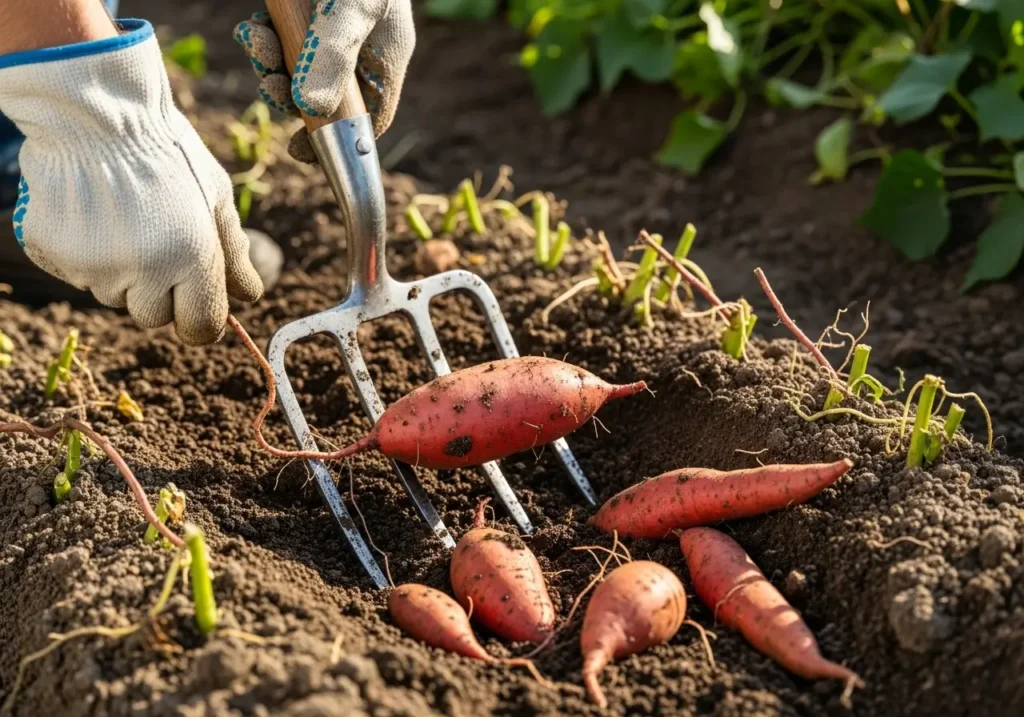
Handling Your Harvest: From Garden to Storage
This part’s super important, and I see many people mess up without realizing it. Sweet potatoes have pretty delicate skin when they’re fresh out of the ground, so you gotta be gentle with them.
As I dig each one up, I brush off the dirt with my hands—no washing or scrubbing yet. Any little cuts or scrapes become problem spots later when you’re trying to store them, so I’m cautious. If I accidentally nick one, it goes in the “eat this one first” pile.
I let them dry right there in the garden for about an hour, just long enough for any wet dirt to dry up and brush off easily. If it’s really humid, I’ll move them to the garage instead.
Here’s something important that many people don’t know: don’t wash your sweet potatoes if you want to store them long-term! The washing can damage that protective skin and make it rot faster. Only wash them right before you’re gonna cook them.
For curing (which sounds fancy but isn’t), I spread them out in my basement, which stays around 80-85°F for about a week. This helps develop that sweet flavor and toughens up the skin so they’ll keep longer. It’s like giving them a little spa treatment!
Storage Secrets for Long-Lasting Sweet Potatoes
If you cure and store them right, your sweet potatoes can last 6-8 months or even longer. I’ve eaten ones from my harvest well into spring, and they were still perfect.
You want somewhere about 55-60°F and kinda humid but not wet—cool and slightly damp. My basement’s perfect for this, but a cool pantry or even an unheated garage works too (as long as it doesn’t freeze).
I put mine in old produce boxes or baskets—never plastic bags, where moisture gets trapped. Each sweet potato needs some breathing room. I check on them about once a month and toss any that are getting soft or starting to sprout.
Here’s something cool I learned: different varieties store differently. My Georgia Jet ones are best within 2-3 months, but Beauregard and Centennial can easily go 6-8 months if stored right.
Common Harvest Mistakes to Avoid
Let me save you from some of the dumb mistakes I’ve made over the years!
The biggest one? Getting too excited and harvesting early. I totally get it—you wanna see what you’ve got! But those extra weeks on the ground make such a huge difference. If you’re unsure, do a test dig on just one plant.
Using the wrong tools is another biggie. Those nicks and cuts might not look like much, but they’ll cause problems later. Get yourself a decent digging fork—it’s so worth it.
Don’t leave your freshly dug sweet potatoes sitting in direct sun all day. A little drying time is good, but too much sun can sunburn them. Yeah, that’s a thing!
And please don’t harvest if rain’s coming. Wet sweet potatoes are way more likely to rot in storage, and nobody wants that.
Making the Most of Your Sweet Potato Harvest
Once you get the hang of harvesting sweet potatoes properly, you’ll be amazed at how much better they taste and how much longer they last compared to store-bought ones. Those perfectly timed, properly cured sweet potatoes will be sweeter, more flavorful, and more satisfying because you grew them yourself!
If you’re thinking about growing your own next year, definitely check out my complete guide to growing sweet potatoes—it’s got everything from planting to harvest. And if you want to maximize your garden space, my sweet potato companion plants guide has some awesome ideas for what to grow alongside them.
The thing about gardening is that it teaches patience, and sweet potatoes are excellent teachers. Every season’s different, and you learn something new each time. Trust the process, watch for those signs I mentioned, and you’ll end up with some seriously amazing sweet potatoes.
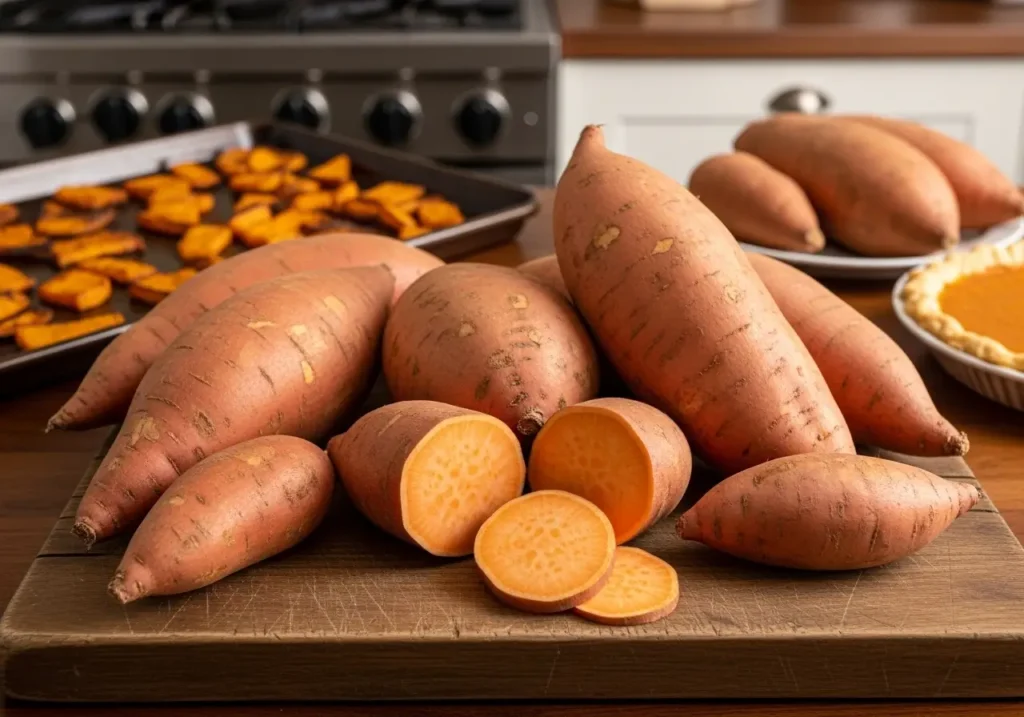
So tell me—have you tried growing sweet potatoes before? I’d love to hear about your experiences, whether total wins or learning moments like my first disaster! Please drop a comment and let’s swap stories. The best gardening advice always comes from real gardeners sharing what actually worked (or didn’t) in their backyards.
Sweet Potato Harvest Timing Frequently Asked Questions
When should I harvest sweet potatoes?
I always harvest my sweet potatoes 90-120 days after planting, usually in mid to late October here in Illinois. Look for those yellowing vines I mentioned – that’s your biggest clue! Just make sure you get them out before any frost hits, because trust me, you don’t want to lose your whole crop to cold weather.
What are the signs sweet potatoes are ready to harvest?
Oh, this is my favorite part! Your vines will start turning yellow and dropping leaves – don’t panic, that’s totally normal. Do that sneaky test dig I talked about and look for nice plump tubers about 3-4 inches long. If the soil’s still around 60-65°F and you’re at least 90 days from planting, you’re golden!
Can I harvest sweet potatoes after frost?
Nope, absolutely not! I learned this the hard way my second year growing them. Even a light frost will mess up your sweet potatoes and ruin your chances of storing them through winter. The second I see frost in the forecast, I’m out there digging – even if I think they could use another week.
How do I know if I harvested sweet potatoes too early?
Been there! Early sweet potatoes are disappointing – they’re small, pale, and taste more like regular potatoes than the sweet beauties you’re expecting. They won’t store well either and might shrivel up on you. If this happens, just eat them quickly and remember to wait longer next year.
What happens if I harvest sweet potatoes too late?
The main risk is frost damage – you’ll get these dark, mushy spots that taste terrible and won’t store at all. But honestly? Sweet potatoes get sweeter the longer they stay in warm soil, so ‘too late’ is really just about beating the frost. It’s all about timing!
How long can sweet potatoes stay in the ground?
They can hang out in there as long as the soil stays above 55°F – usually 90-120 days from planting. I’ve left mine until almost November in really warm years! The longer they stay, the sweeter they get. Just keep an eye on that weather forecast.
